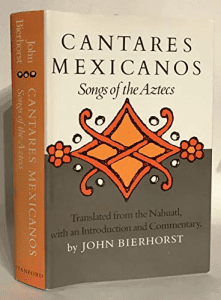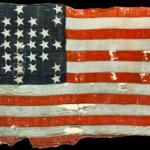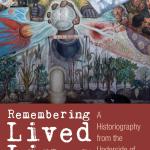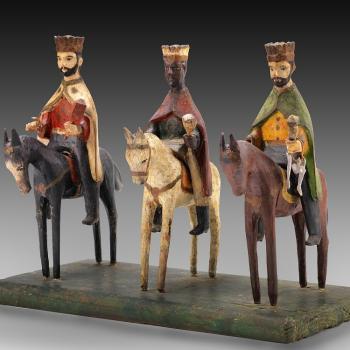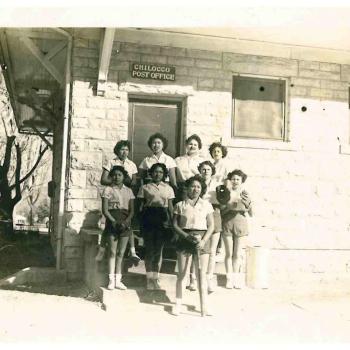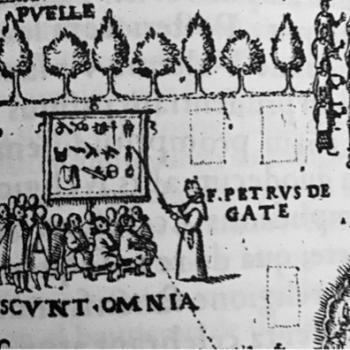Guadalupe & the Flower World Prophesy: Did an Ancient Indigenous Tradition Prepare the Americas for Millions of Conversions to Christianity? Part I
A month ago today, on December 12, just as dawn began to break, Catholics around the world sang “La Mañanitas” to Our Lady of Guadalupe to commemorate her appearance as an indigenous maiden to a Nahua reed mat seller named Juan Diego on a Mexican hillside in December 1531, leaving her image on his tilmatli, or maguey-fiber clock; Juan Diego’s own feast day is December 9, the date of the first apparition. Today, the image of la Guadalupana is ubiquitous in Mexico and indeed throughout the Southwestern United States where I have spent much of my life. As a Catholic Mexican American, I cannot remember a time when I did not know and love her. Last month, my post included a photo of a ceramic box from Mexico with her image on it, and as I discuss in Juan Diego and the Indigenous Engineers of Mexico-Tenochtitlan and Will the real Juan Diego please stand up? Europeanizing an indigenous saint, I am currently writing a children’s chapter book about Juan Diego, placing the apparition story in its indigenous context.
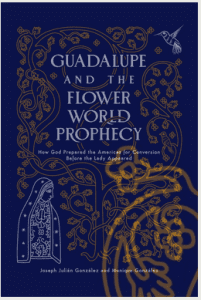
Guadalupe and the Flower World Prophecy: How God Prepared the Americas for Conversion Before the Lady Appeared (Sophia Institute Press, 2023)
The appearance of a new book, Guadalupe and the Flower World Prophecy: How God Prepared the Americas for Conversion Before the Lady Appeared has re-ignited interest in Guadalupe. Since its publication last November, its authors, spouses Joseph and Monique González, an award-winning composer and accomplished singer who together spent 14 years researching the apparition, have made multiple appearances on podcasts, have written about their findings, and their book has been the subject of various reviews. Given my interest in Guadalupe, a friend alerted me to this book, mentioned that Joseph González had composed a Mass in Nahuatl (Misa Azteca), sent me a link to a podcast, and asked me what I thought.
To be clear, I have not yet read the book – nor do I consider myself a Guadalupe expert – but I have read reviews and articles about its arguments and have listened to podcasts in which the authors themselves discuss their research, so I feel comfortable providing my preliminary thoughts.
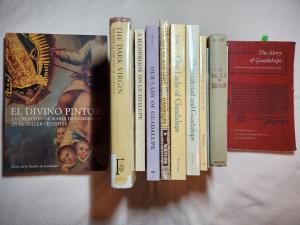
A selection of my collection of Guadalupe books, devotional and scholarly
In essence, the Gonzálezes reinterpret the Guadalupe narrative based on an ancient indigenous belief in a paradisical domain known as “Flower World,” an idea disseminated in Pan-Mesoamerica via art over hundreds of years and eventually through the singing of Nahuatl-language flower-songs (poems). Highlighting the words spoken by Juan Diego as he encounters the Virgin (i.e., “Am I in the land of flowers of which my ancestors spoke?”) and the manner in which the Lady identifies herself (“I am the Mother of the God of Near and Far,” i.e., the deity who could provide access to the Flower World), the book argues that native populations who heard the apparition story would have recognized the music, colors, and flowers as synonymous with the Flower World and thus it would have resonated deeply with them. Here, then, the authors see evidence that God had been preparing the hearts of native people in the Americas to accept Christ. Ultimately, the authors posit, it was the flower-songs about Guadalupe that led to millions of native conversions, not, as commonly believed, the tilma itself with its imprint of the heavenly Lady.
The Gonzálezes build their argument upon the seminal work of Jane H. Hill, a University of Arizona anthropologist who proposed in “The Flower World of Old Uto-Aztecan,” that “a complex system of spirituality centered on metaphors of flowers” formed part of the “cultural repertoire of many of the prehistoric and historical peoples of the Southwest and Mesoamerica” particularly in the Southwestern United States and Central America (The Journal of Anthropological Research, 48: 1992, 117). These metaphors were often represented with chromatic symbols, that is, bright colors, iridescent phenomena like dawn and sunset, rainbows, hummingbirds, butterflies, shells, crystals, etc. Anyone who knows Juan Diego’s story knows that the sound of music just before dawn preceded the Virgin’s apparition (prompting him to ask, “Am I dreaming?”), and that from her presence radiated a variety of iridescent colors. Hill herself states that these chromatic experiences can occur in dreams or in waking experiences, arguing that “[t]he use of chromaticism in the construction of spirituality is so widespread that it must represent a very ancient level of religious thought” (118).
As further support for the argument, the book cites the “Origin of Songs,” or Cuicapeuhcayotl, the first of 91 Nahuatl flower-songs known collectively by their Spanish name, Cantares Mexicanos; transcribed in the sixteenth century, nearly a third include Flower World motifs. A seventeenth-century manuscript copy currently resides in the Biblioteca Nacional in Mexico City.
In the Cuicapeuhcayotl, a singer asks:
From whence shall I take the beautiful, fragrant flowers?
Whom shall I ask?
Perhaps I should ask the lovely hummingbird,
the jade-colored hummingbird?
Then he says:
If they are shown to me,
I will gather them in my lap
and thus I will salute the princes;
I will please the lords.
And later:
There I saw
the varied, precious, perfumed flowers,
the beloved, aromatic flowers bedecked in dew,
with the splendor of the rainbow.
And:
In truth only the Omnipresent One
decides who shall deserve
the flowers here on earth.*
The similarities between this flower-song and Juan Diego’s experience are undeniable, from the appearance of the same songbirds to the notion of gathering flowers in one’s tilmatli to the mention of Tloque Nahuaque (translated here as Omnipresent One). I have read and taught various flower-songs from the Cantares Mexicanos, and it’s impossible not to notice the frequency of flowers. Placing this first flower-song alongside the Juan Diego story is a beautiful comparison. For the Gonzálezes, the Cuicapeuhcayotl serves as a prophecy fulfilled by Our Lady’s apparition to Juan Diego, a sort of Paradise Lost to Juan Diego’s Paradise Gained.
In their video appearances, the Gonzálezes appear personable, knowledgeable about Nahua flower-songs, conversant with various sixteenth-century indigenous and Castilian texts, and pronounce Nahuatl well. They are clearly devotees of Guadalupe (as am I!), and this devotion has fueled their research. But this was not always so. Joseph González’s first reading of the Cuicapeuhcayotl in John Bierhorst’s 1985 translation of the Cantares Mexicanos led to a crisis of faith predicated on Bierhorst’s assertion that this flower-song was the basis of the fabricated Guadalupe narrative used to manipulate native people. It would be his future wife, Monique, who encouraged him to rethink his response and together they would search for answers, “open to ceding the point that the Guadalupe narrative was a fabrication if the evidence showed it. After all, belief in the apparition of Our Lady of Guadalupe is not necessary to our Catholic faith” (Introduction). You can read Joseph’s story and the first chapter here.
I look forward to learning more about how the Gonzálezes reach their conclusions. While I am certainly open to the idea that God prepared the hearts of the peoples of the Americas to accept Christianity, at present I take issue with two of the book’s premises. I will outline my responses next month in Part II, after I read the book. Stay tuned.
* You can read an English translation of this beautiful flower-song here.


